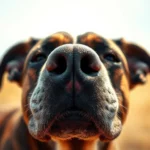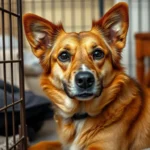
Pugs are known for their charming personalities and distinctive looks, but like all dogs, they can display behaviors that may concern their owners. One such behavior is screaming, which can be alarming and perplexing. Understanding why your pug is screaming can lead to better health care and a more harmonious relationship with your furry friend.
Understanding Pugs and Their Behavior
Overview of Pug Characteristics
Pugs are small, stocky dogs with a distinctive wrinkled face and curled tail. They typically weigh between 14 to 18 pounds and stand about 10 to 14 inches tall. Their short coat requires minimal grooming, but their unique structure can predispose them to various health issues.
Pugs are known for their affectionate and playful nature. They thrive on human companionship and often display a lively personality, making them delightful pets. However, their sociable nature means they can also become distressed when they feel neglected or anxious.
Typical Vocalizations in Pugs
Pugs communicate through various vocalizations, each serving a different purpose. Normal sounds include:
- Barking: Often used to alert owners or express excitement.
- Whining: Typically a sign of discomfort or a request for attention.
- Screaming: This can be an alarming sound that indicates distress, pain, or an urgent need.
Understanding the nuances of these vocalizations is crucial for identifying the underlying issues when your pug starts screaming.
Possible Reasons for Screaming
Medical Issues
Pain and Discomfort
One of the primary reasons for your pug’s screaming could be pain or discomfort. Dogs often express pain through vocalizations, and it’s essential to recognize the signs. Common indicators that your pug may be in pain include:
- Reluctance to move or play
- Changes in appetite or drinking habits
- Excessive licking or chewing of a specific body part
Pugs are susceptible to several health problems that may cause pain, including hip dysplasia, patellar luxation, and skin issues. If your pug is screaming and showing any of these signs, a veterinary visit is crucial.
Respiratory Issues
As brachycephalic dogs, pugs have unique respiratory challenges due to their short snouts. They are prone to breathing difficulties, especially in hot or humid conditions. Signs of respiratory distress include:
- Excessive panting
- Difficulty breathing or wheezing
- Blue-tinged gums
If you notice your pug screaming along with these symptoms, it may indicate respiratory distress that requires immediate attention.
Neurological Problems
Neurological issues, such as seizures, can also cause screaming in dogs. If your pug experiences episodes of screaming followed by disorientation, twitching, or loss of consciousness, it may be indicative of a seizure. Observing and documenting these episodes can provide valuable information for your veterinarian.
Behavioral Causes
Attention-Seeking Behavior
Pugs are social animals and can become vocal if they feel ignored. If your pug is screaming for attention, it may be a learned behavior from past interactions. They may have discovered that screaming gets them the attention they desire, whether it’s positive or negative.
Fear and Anxiety
Pugs can be sensitive to changes in their environment, leading to fear or anxiety. Common triggers include loud noises, unfamiliar people, or even changes in routine. Signs of anxiety may include:
- Excessive barking or screaming
- Hiding or seeking comfort in familiar spaces
- Destructive behavior
Identifying and mitigating these triggers can help in reducing your pug’s fearful reactions.
Frustration or Boredom
Lack of mental and physical stimulation can lead to frustration, resulting in vocalizations such as screaming. Pugs require regular exercise and playtime to keep them engaged. If they don’t receive enough stimulation, they may resort to screaming as a way to express their boredom.
Environmental Factors
Changes in Routine
Dogs thrive on routine, and any sudden changes can affect their behavior. Moving to a new home, a new family member, or changes in your work schedule can all contribute to feelings of insecurity in your pug. If your pug is screaming after such changes, it’s important to provide reassurance and stability.
Presence of Other Animals
The introduction of new pets into the household can also lead to behavioral changes in pugs. They may scream to assert dominance or express distress over competition for resources such as food, attention, or space. Monitoring interactions with other animals can help identify the cause of the screaming.
When to Seek Professional Help
Recognizing Urgent Situations
If your pug is screaming and exhibiting severe symptoms such as difficulty breathing, uncontrolled bleeding, or signs of a seizure, it’s crucial to seek immediate veterinary attention. Timely intervention can be life-saving.
Consulting a Veterinarian
During a veterinary visit, you can expect a thorough examination of your pug. The vet may ask about the frequency, duration, and context of the screaming. It’s helpful to provide detailed observations to assist in diagnosing the issue. Questions to consider asking your vet include:
- What could be causing my pug’s screaming?
- Are there specific tests needed to diagnose the problem?
- What treatment options are available?
Home Remedies and Care Tips
Managing Pain and Discomfort
For minor discomfort, certain natural remedies may help alleviate pain. Consider consulting your vet about options like:
- Turmeric: Known for its anti-inflammatory properties.
- Acupressure: Can help relieve tension and discomfort.
- Massage: Gentle massage can soothe your pug and help them relax.
Always consult your veterinarian before trying any new remedies to ensure they are safe for your pug.
Reducing Anxiety and Stress
Calming an anxious pug can involve various techniques, including:
- Creating a Safe Space: Designate a quiet area with their favorite blankets and toys.
- Calm Music or White Noise: Soft music or white noise can help mask stressful sounds.
- Training: Positive reinforcement training can build confidence and reduce anxiety.
Providing Mental and Physical Stimulation
To keep your pug engaged, consider incorporating a variety of activities into their daily routine. Some ideas include:
- Interactive Toys: Puzzle toys can challenge your pug’s mind and keep them entertained.
- Regular Walks: Daily walks provide physical exercise and mental stimulation.
- Playtime: Engaging in play with fetch or tug-of-war can help channel energy positively.
Preventative Health Care for Pugs
Regular Veterinary Check-Ups
Routine veterinary visits are essential for maintaining your pug’s health. Regular check-ups allow for early detection of potential health issues and ensure that vaccinations are up to date.
Vaccinations and Preventative Treatments
Pugs require specific vaccinations to protect against common diseases. Essential vaccinations include:
- Rabies
- Distemper
- Parvovirus
Discuss with your veterinarian to ensure your pug receives necessary preventive treatments such as flea and tick control.
Nutrition and Exercise
A balanced diet is crucial for your pug’s overall health. Pugs are prone to obesity, so it’s essential to monitor their food intake and provide healthy, portion-controlled meals. Regular exercise is also vital. Aim for at least 30 minutes of moderate activity daily, which can include walks or playtime.
Conclusion
Understanding why your pug is screaming involves recognizing the underlying medical, behavioral, and environmental factors that can contribute to this distressing behavior. By being attentive to your pug’s needs and seeking professional help when necessary, you can improve their health and well-being. Proactive dog health care, including regular veterinary visits, proper nutrition, and mental stimulation, will ensure that your pug remains a happy and healthy companion. Always remember to monitor your pet’s behavior and seek help if changes occur, as early intervention can make all the difference.
Resources and Further Reading
- Books on dog health care
- Websites dedicated to pet care and training
- Support groups for pug owners
By staying informed and proactive, you can make a significant impact on your pug’s quality of life.









